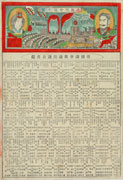Prints in Collection
IHL Cat. #1943 | A List of the House of Representatives, 1891 IHL Cat. #303 | Pyongyang Chinese Generals Surrender, 1894 IHL Cat. #513 |
Biographical Data
Biography
Nagashima Shungyō 永嶌春暁 (active 1870-1905)
Almost nothing is known about the life of Nagashima Shungyō. Chaikin and the Tahara Municipal Museum state he was the son of Utagawa Yoshitora (fl. c. 1836-1882).1 Chaikin also writes that he called himself Mōsai after 1874 and was also known as Utagawa Shungyō.2 Most of his extant prints are senso-e of the Sino-Japanese War or kaika-e (prints of modernization and Westernization).
The online database of the Fine Arts Museums of San Francisco, provides the following information on "Shungyo Nagashima":
Nationality: Japanese; Gender: Male; Identified by a Google search. Dates given as active 1882-1905, but print in AFGA collection has been dated to 1906 by Roger Keyes. Son of Utagawa Yoshitora, an Edo artist and a pupil of Utagawa Kuniyoshi , active ca. 1850-1880.3
The British Museum lists the artist Nagashima Shungyo as being active 1850-1910.4
Shungyō and Yoshitora One In The Same?
Several sources suggest or imply that Nagashima Shungyō, rather than being the son of Utagawa Yoshitora, is one and the same with Yoshitora. This seems to be based upon their reported family and given names Nagashima Tatsugorō 永嶌辰五郎 being the same5 and their both frequently using the art name Mōsai 孟斎 in signing many of their prints. I think they were two different artists, based upon stylistic and subject matter differences in their prints. In addition, they had different recorded home addresses for the year 1880. Andreas Marks tells us that Yoshitora's home address in 1877 to 1878 was Kandaku Sudachō Yon-banchi, in 1879 Kyōbashi Matsukawachō Roku-banchi, and in 1880 to 1881 Kanda Kajichō Roku-banchi. Shungyō's address on this collection's 1880 print The Glory of the Imperial Flowers is given as Kandaku Sudachō Yon-banchi, matching Yoshitora's 1877-1878 address but not matching his 1879-1881 addresses.6
Signatures Attributed to the Artist Nagashima Shungyō
1 The Sino-Japanese War, Nathan Chaikin, self-published, 1983, p. 61
 Nagashima Mōsai ga, 1877 (British Museum) |  永嶌孟斎画 Nagashima Mōsai ga |  永嶌孟斎筆 Nagashima Mōsai hitsu |  春暁画 Shungyō ga | 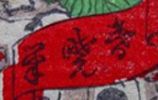 春暁画 Shungyō ga 1891 |  Nagashima Mōsai |
 永島春暁画 芳照 Nagashima Shungyō ga seal reading Yoshiteru |  春暁更芳照画 Shungyō sara Yoshtieru ga 1890 |
 Mōsai Shungyō, 1894 | 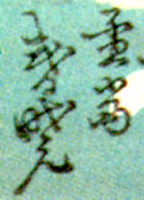 Mōsai Shungyō, 1894 |  Mōsai Shungyō, 1894 (IHL Cat. #513) | 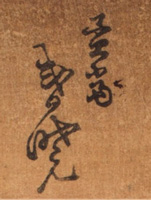 孟斎春暁 Mōsai Shungyō |
 Mōsai Shungyō ga, 1889 |  Mōsai Shungyō ga, 1888 | 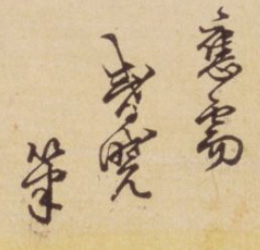 應需春暁画 ōju Shungyō ga |
Tahara Municipal Museum website: http://www.taharamuseum.gr.jp/exhibition/2014/ex140531/index3.html
Yoshitora (active c. 1850-1880) was born Nagashima and was a disciple of Kuniyoshi.
2 Op. site Chaikin, p. 61.
3 website of the Fine Arts Museums of San Francisco https://art.famsf.org/node/945827
4 http://www.britishmuseum.org/research/search_the_collectionc_database/term_details.aspx
4 http://www.britishmuseum.org/research/search_the_collectionc_database/term_details.aspx
5 Although I think the addresses given for artists were somewhat suspect as they sometimes were the address of the publisher.
6 Nagashima is also seen using the characters 永島 and 長島
6 Nagashima is also seen using the characters 永島 and 長島
last revision:
11/27/2018

